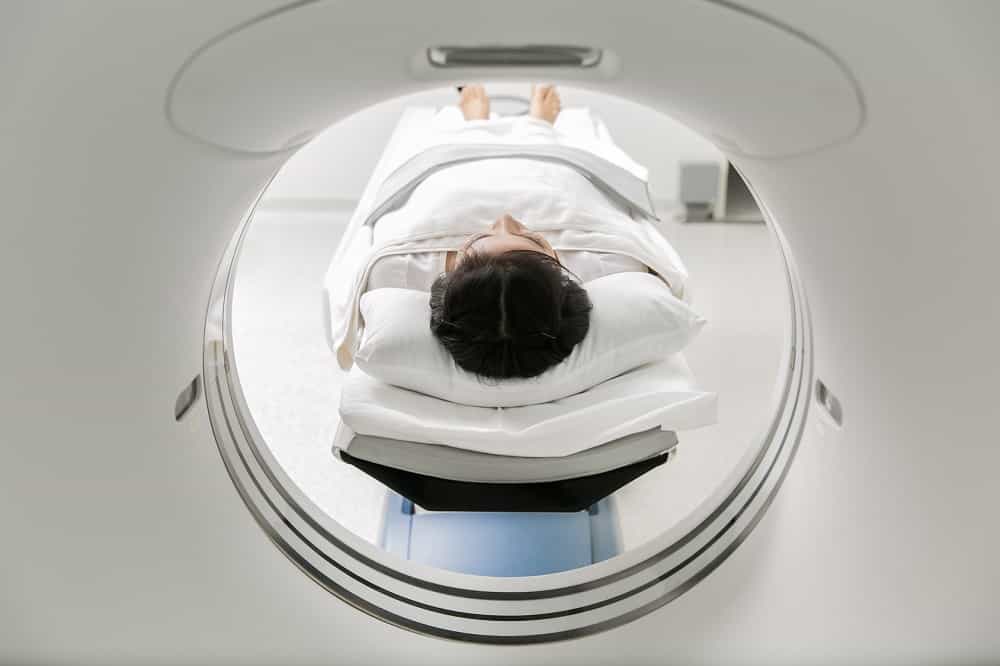Computed tomography scans, or CT scans, can be a useful diagnostic tool. They use x-ray technology to take multiple, layered images of organs, soft tissue structures, the brain, and other internal structures. A CT scan may be ordered after an examination to look for areas of trauma or internal bleeding, to determine the size and location of a tumor, or to view bone damage with more accuracy and definition. Some CT scans may use a liquid contrast dye in order to view organs and systems with more clarity. With CT scans, you are exposed to more radiation than a typical x-ray or MRI.
CT scans can be useful in physical therapy if there are unexplained symptoms or a more serious underlying pathology is expected. However, this type of imaging should be used with caution due to the excessive radiation exposure and cost. A study found that, in 2007, 2.2 million CT scans were performed on the lumbar spine. These CT scans were projected to cause 1200 additional future cancers based on the radiation exposure received by these patients (1). Likely, at least ⅓ of those scans were not medically necessary (1).
As with other imaging, positive findings on a scan or image does not always correlate with symptoms. Someone who is experiencing a lot of pain and has positive clinical symptoms may not have a positive finding with imaging, while someone with a positive finding on an image may not have any clinical symptoms. One study published in the Journal of the American College of Radiology found that the rate of inappropriate referral of CT scans for low back pain was 53%, while the rate of inappropriate referral of MRI scans was 35% (2). Furthermore, overemphasizing a finding on an imaging result may lead to unnecessary or inappropriate treatments and has been shown to increase the risk of surgery (3). Due to the poor correlation between imaging findings and symptoms, results must be interpreted in conjunction with a full clinical exam and clinical findings. Lastly, the underlying cause for injury cannot often be gleaned from an image. It is only through a full, thorough patient history and physical examination that the underlying movement fault or dysfunction can be found.
As with other imaging techniques such as MRI's or ultrasounds, CT scans can be very useful in determining which and to what extent internal structures are injured or damaged. However, it is crucial to use these imaging tools in conjunction with an examination and to relate these findings to clinical symptoms to provide the best course of treatment possible.
- Berrington de Gonzalez A, Mahesh M, Kim K, et al. Projected cancer risks from computed tomographic scans performed in the United States in 2007. Arch Intern Med. 2009;169:2071-2077.
- Lehnert BE, Bree RL. Analysis of appropriateness of outpatient CT and MRI referred from primary care clinics at an academic medical center: how critical is the need for improved decision support? J Am Coll Radiol. 2010;7:192-197. http://dx.doi.org/10.1016/j.jacr.2009.11.010
- Verrilli D, Welch HG. The impact of diagnostic testing on therapeutic interventions. JAMA. 1996;275:1189-1191.





